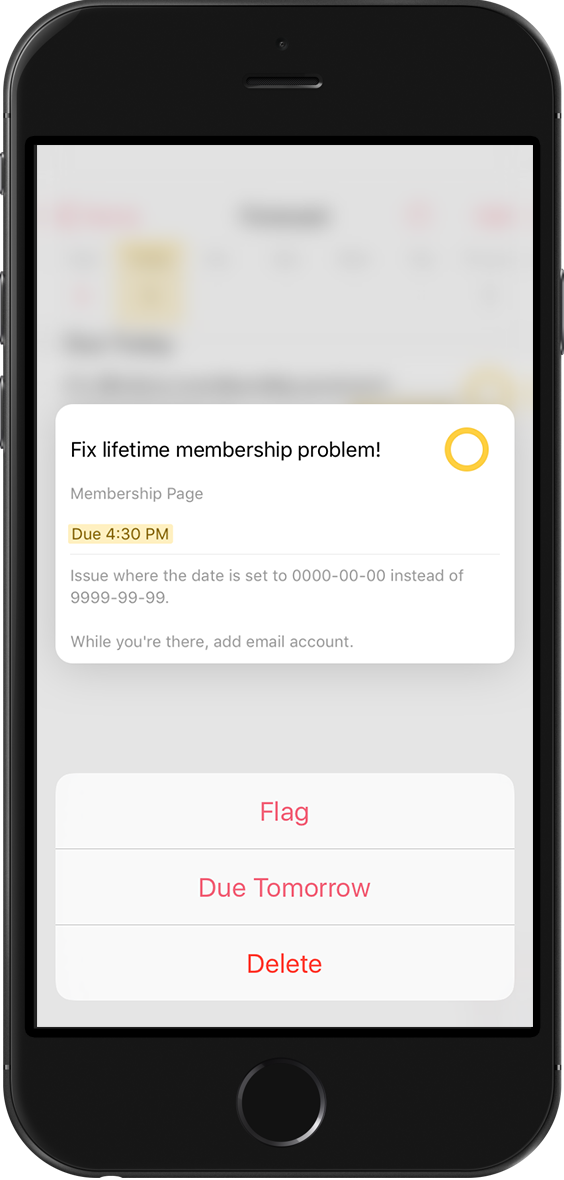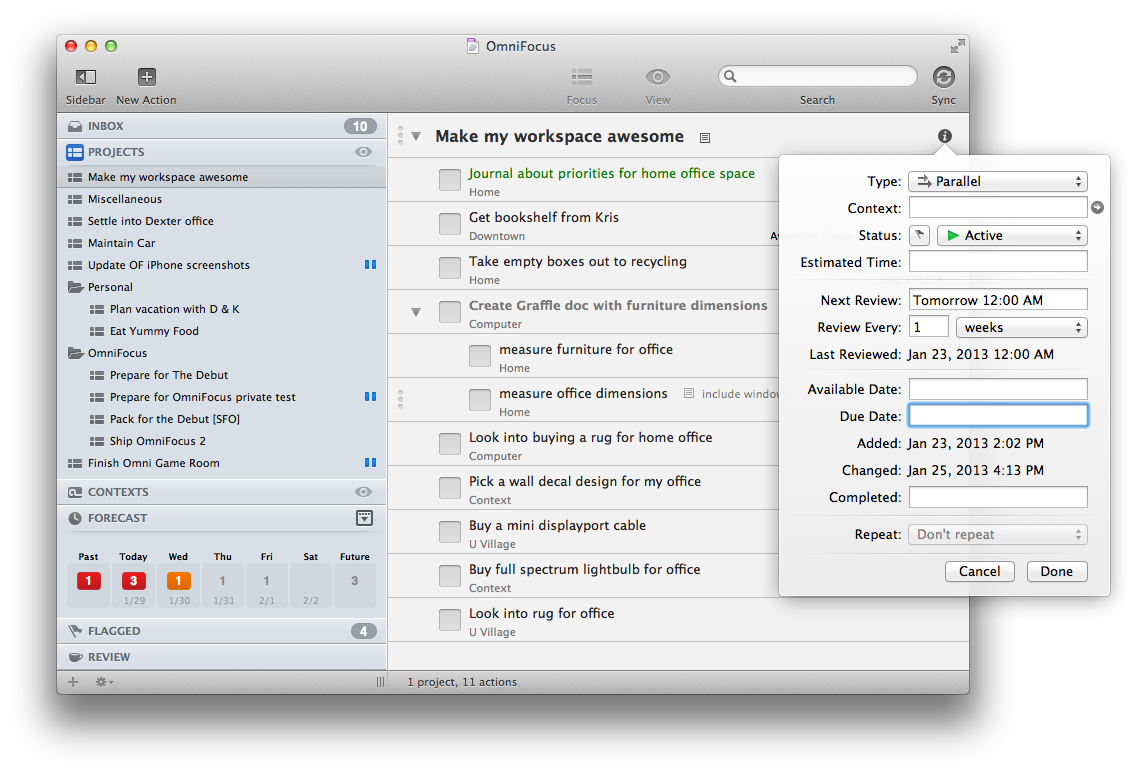

- #Omnifocus fantastical how to#
- #Omnifocus fantastical archive#
- #Omnifocus fantastical pro#
- #Omnifocus fantastical password#
With a hardcore price ($40 each for the mobile and desktop versions, rising to $60 and $80 for the pro versions), and a hardcore feature-set, omnifocus isn’t going to be for everyone. One missing feature, though, is the ability to be reminded in a specific location. It can sync between platforms, remind you about events at a specific time, and sort items between lists, but it does it all with a panache that the built-in Reminders app falls down on. If you use one, definitely use the other Swap Reminders for WunderlistĪnother Microsoft-owned app, Wunderlist is a neat and tidy to-do list app. Not, strictly speaking, relevant here, because it’s a desktop app, but it syncs with Simplenote and has become one of the best stripped-down note managers available for Macs. It’s halfway between a backup and a memory aid, and can be exceedingly useful in a pinch. Simplenote, by contrast, syncs not only with its own web service, letting you access it anywhere, but also keeps a history of notes, letting you roll back to an earlier time if you want to see what your life was like in the past. But the app’s syncing features are sub-par: it’s hard to escape from Apple’s walled garden, for one, meaning you have to use the Notes client on desktop unless you’re willing to dig in to the weeds of iCloud. Swap Notes for SimplenoteĪpple’s Notes is actually quite good.

#Omnifocus fantastical password#
So switch to a password manager that fixes those issues, and improves in other ways too: 1Password lets you store any other sensitive information in encrypted format, from credit cards to passport numbers. And while suggesting passwords randomised to a standard format, as Apple does (four hyphen-separated groups of three characters), is only a mild security risk, it’s much more annoying if you’re trying to log in to a site with a restrictive password policy banning hyphens. The service has no easy “front door”, instead being buried deep in the settings menu, which means if you need to actually find out what the random password you just assigned is – say, to log in on a non-Apple device – you’ll be clicking for a while. The feature, which is part of iCloud, will automatically sync passwords across devices, and suggest new randomised ones when you’re signing up to a site through Safari. (Where Microsoft gives with one hand, it takes away with the other: Sunrise would probably have taken Fantastical’s place here, except the calendar app was bought by Microsoft last year and will be shut down next month) Swap iCloud Keychain for 1PasswordĪpple’s password manager isn’t an app, strictly speaking – but that’s part of the reason why it’s worth replacing. If you want to take it further, you can swap in the desktop version of Fantastical too – though at $39.99, that’s a bigger commitment. It has an impressive natural language engine which, unlike Apple’s, actually works, letting you type “write a post about great productivity apps at 3pm on Friday” and get a calendar event already populated. There’s a nifty “day ticker” which lets you see how busy you are in any given day from the top level view. The app, now in its second version for mobile, has a few specific features which make it worth the £4. It handles time-zones terribly – I’ll never forgive it for making me miss the last Eurostar out of Paris on a Sunday night – but that’s about all. It’s clean, relatively fully-featured, and syncs well with third-party services. The built-in Calendar is one of the better apps that comes with iOS. Microsoft built on the app’s productivity features, adding syncing with cloud storage platforms, improving the built-in calendar, and adding support for a huge number of email services. Unlike those two, though, Accompli wasn’t shut down after its acquisition, but instead overhauled further.
#Omnifocus fantastical archive#
Like Mailbox and Sparrow before it, Accompli was a delightful stripped-down mail client, working with multiple webmail platforms and offering now-standard features like swiping to archive or schedule for follow-ups and a focus on inbox-zero mail management. Outlook Mobile is based on an app called Accompli, bought by Microsoft back in 2014 and rebranded a few months later. That might be because it wasn’t really made by Microsoft. On mobile, Outlook is really, really good. Home of recall requests that don’t work, weird proprietary smilies, and the most famous computer virus in history.
#Omnifocus fantastical how to#
Here are my picks for how to step your app game up a notch.


 0 kommentar(er)
0 kommentar(er)
